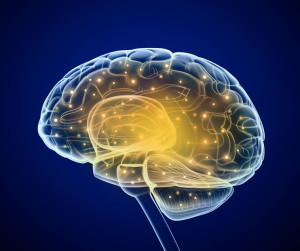
Contributor: Sierra Tucson clinical team member Kathryn Taylor, MA, LPC/MHSP
Brain mapping includes scientific or medical methods that are used to understand the specific functions of each part of the brain. Brain mapping may include non-invasive studies such as electroencephalograpy (EEG) testing or using small electrical currents to test tiny areas of the brain, or it may include more invasive procedures such as those used during brain surgery. [1]
Brain mapping is not a new process, but it has received extra attention in recent years due to huge leaps in technology.
Many universities are exploring this new science in order to uncover the physical processes of the human brain to help us better understand why we do the things we do (e.g. how emotions impact thinking and action) and in order to develop better treatments for a host of mental health issues.
The UCLA Brain Mapping Center is one such program. Now in existence for more than 20 years, this program uses a number of brain mapping techniques, including MRI machines, a Signa scanner, and a Siemens Positron Emisson tomography scanner.
EEG technology and transcranial magnetic stimulation are also used. [2] Other brain mapping programs use a similar host of devices to study the human brain in various states and with various stimuli or emotional scenarios.
Many of these tests allow us to see the brain in new ways, with vivid colors illuminating each part of the brain on the computer display, showing how those parts are impacted by various situations. As new data is developed in research labs around the world, the larger research community is able to show physical data that relates to human psychology.

These elaborate and expensive machines all work to serve a greater purpose in helping advance our understanding of neurology and to help our society develop more advanced and precise cures to mental health issues.
This is incredibly important to addiction treatment, because society’s understanding of the brain has already helped us understand that addiction has real genetic and physical causes and effects, and that addiction is not a moral failing.
Because of the incredible research being done in brain mapping and neurology, even insurance companies and corporations have come to understand that addiction requires medical attention that treats a wide range of very real symptoms, causes, and effects of substance use.
Brain Mapping and Addiction
The study of addiction’s impact on the brain is still ongoing. Because there are constant advances in technology and understanding of the human brain, information that is presented today may not be fully accurate tomorrow. Brain mapping and neurology are in a state of growth, and new data seems to arrive daily.
Two recent studies found in the scientific journals Addictive Behaviors and Addiction demonstrated some interesting results about addiction and the brain.
Researchers affiliated with the University of Rochester Medical Center were using brain mapping to study stroke survivors when they discovered that some of those stroke survivors who had previously been addicted to cigarettes were no longer addicted after they survived the stroke. [3] In fact, these specific few stroke survivors who had been long-term smokers no longer craved cigarettes at all!
 The researchers completed in-depth brain mapping to find out why some former smokers quickly gave up smoking for good after a stroke. The answer soon became clear: patients who had survived a stroke that impacted the insular cortex of the brain no longer craved their addiction.
The researchers completed in-depth brain mapping to find out why some former smokers quickly gave up smoking for good after a stroke. The answer soon became clear: patients who had survived a stroke that impacted the insular cortex of the brain no longer craved their addiction.
Further studies revealed that other people with an addiction to cigarettes who received injury to the insular cortex also stopped craving nicotine, even after years of addiction and dependence.
It has been hypothesized then, that this small part of the brain— the insular cortex, a part of the cerebral cortex that is tucked within the lateral sulcus— may be a key to addiction recovery. Tests are underway to see if this phenomenon applies to other addictive substances, including prescription drugs.
Short of having a stroke in order to overcome addiction, how does this information impact most individuals who struggle with addiction every day? There are many answers in this data. Not only did injury to the insular cortex prevent cravings, it also prevented painful withdrawal symptoms such as illness, sweating, and irritability.
There are ways to help the brain overcome addiction without having a stroke. New treatments are being developed to help patients overcome withdrawal symptoms by reaching the insular cortex in less extreme ways. For instance, transcranial magnetic stimulation can send magnetic waves to alter some functioning in the insular cortex to create a more comfortable withdrawal process. Other treatments may include medications that impact the insular cortex.
What Happens to the Brain During Drug Withdrawal?
The effects of withdrawal often depend largely on the substance used and the overall physical health of the person who is going through withdrawal. When it comes to prescription drugs, the effects are usually long-lasting.
 Most clinicians agree that there are two phases of drug withdrawal: Acute Withdrawal (commonly known as “detox”) and Post-Acute Withdrawal. While initial detoxification (acute withdrawal) from a drug does bring the most uncomfortable, yet short-lived, sensations, post-acute withdrawal may last for months after the individual stops using the substance. [4]
Most clinicians agree that there are two phases of drug withdrawal: Acute Withdrawal (commonly known as “detox”) and Post-Acute Withdrawal. While initial detoxification (acute withdrawal) from a drug does bring the most uncomfortable, yet short-lived, sensations, post-acute withdrawal may last for months after the individual stops using the substance. [4]
Brain mapping has offered some explanations for these changes. When a person uses a substance such as an opioid-based painkiller for a lengthy period of time, the brain adapts to this substance and begins to actually function differently.
After the person has stopped using this drug, it takes some time for the brain to restore itself to its natural state.
There is hope. It is important to seek the best support system and the most up-to-date treatment methods to help any addicted person get through the rough patches.
Psychologists and physicians alike recommend programs that work with these brain processes to support the individual through all stages of withdrawal and wellness. Over time, the brain shows an amazing ability to heal itself and return to normal once again.
References:
1. Brain Mapping. (2015). Retrieved from http://www.epilepsy.com/learn/treating-seizures-and-epilepsy/surgery/pre-surgery-tests/brain-mapping
2. UCLA Brain Mapping Center History. (2014.) Retrieved from http://www.bmap.ucla.edu/about/history/
3. Studies Suggest That Insular Cortex May Hold Key to Treating Addiction. (2015, September 08). Retrieved from http://www.news-medical.net/news/20150908/Studies-suggests-that-insular-cortex-may-hold-key-to-treating-addiction.aspx
4. Mager, D. (2015, May). Detoxing after Detox: The Perils of Post-Acute Withdrawal. Retrieved from https://www.psychologytoday.com/blog/some-assembly-required/201505/detoxing-after-detox-the-perils-post-acute-withdrawal
About the author:
“Brain Mapping in Prescription Drug Withdrawal and Recovery” was written by Sierra Tucson clinical team member Kathryn Taylor, MA, LPC/MHSP. Kathryn has several years of experience working in dual diagnosis addiction treatment, women’s issues, and trauma treatment as a licensed mental health counselor.
About Sierra Tucson:
Founded over 30 years ago, Sierra Tucson is a leading provider of mental health and substance abuse care. Sierra Tucson’s treatment model integrates evidence-based medical and psychological care and is staffed around-the-clock with dedicated, compassionate physicians, psychologists, psychiatrists, nurses, and Master’s-level clinicians.
The campus is situated on 160 acres in the high desert north of Tucson, Arizona, and offers stunning views of the Santa Catalina Mountains.
The opinions and views of our guest contributors are shared to provide a broad perspective of addictions. These are not necessarily the views of Addiction Hope, but an effort to offer a discussion of various issues by different concerned individuals.
We at Addiction Hope understand that addictions result from multiple physical, emotional, environmental, and genetic factors. If you or a loved one are suffering from an addiction, please know that there is hope for you, and seek immediate professional help.
Published on March 15, 2016
Reviewed and Updated by Jacquelyn Ekern, MS, LPC on January 13, 2021
Published on AddictionHope.com
